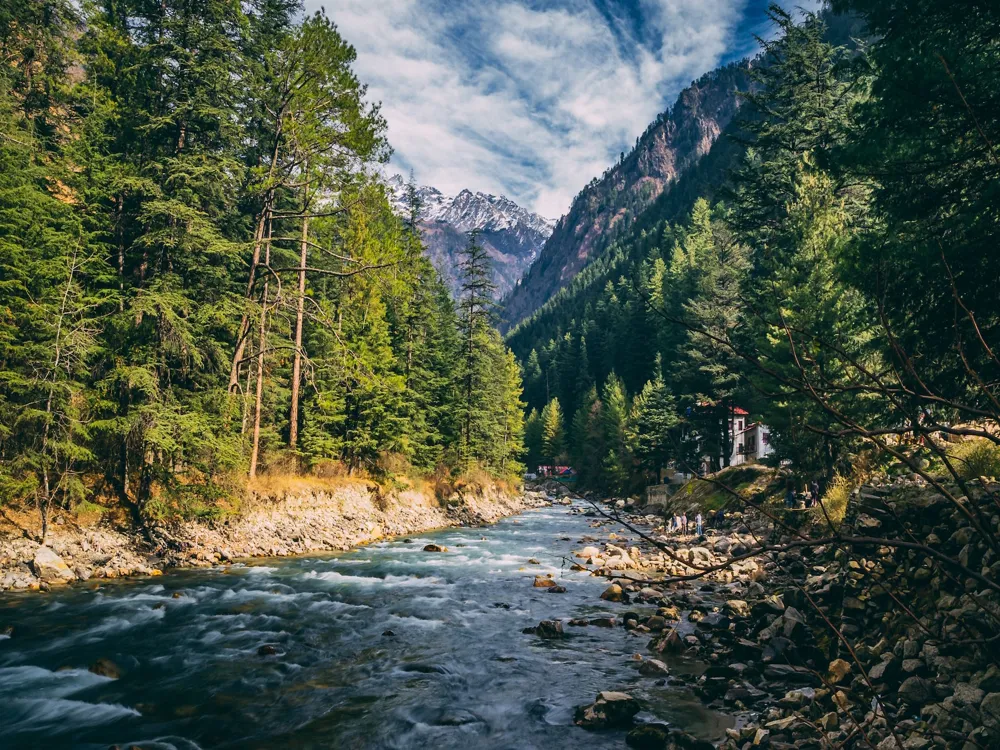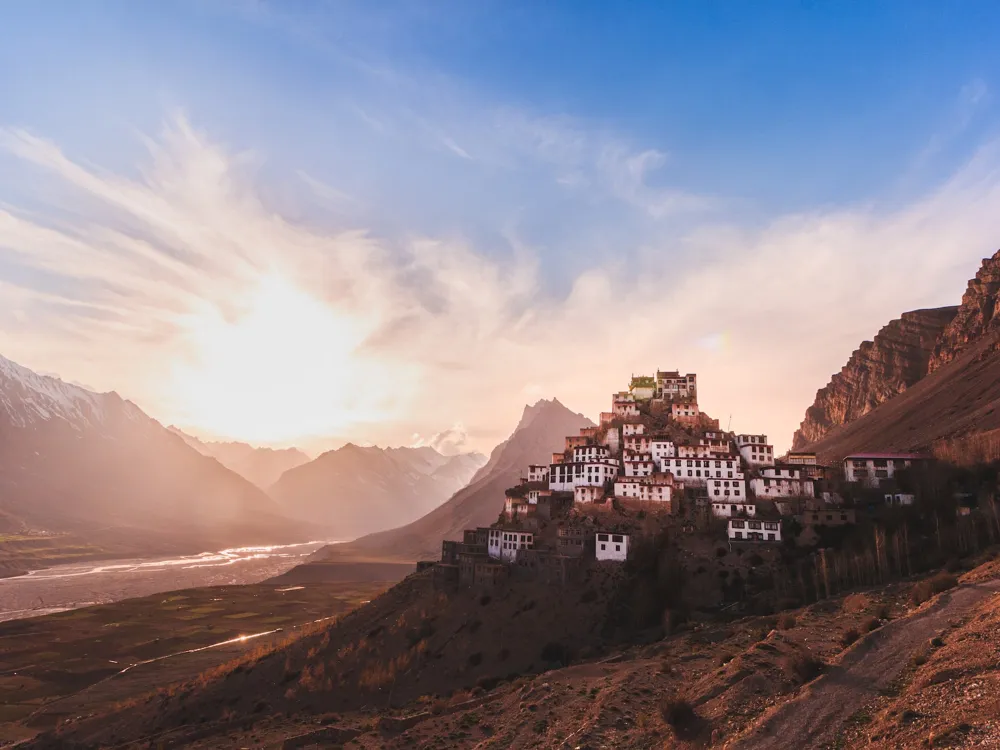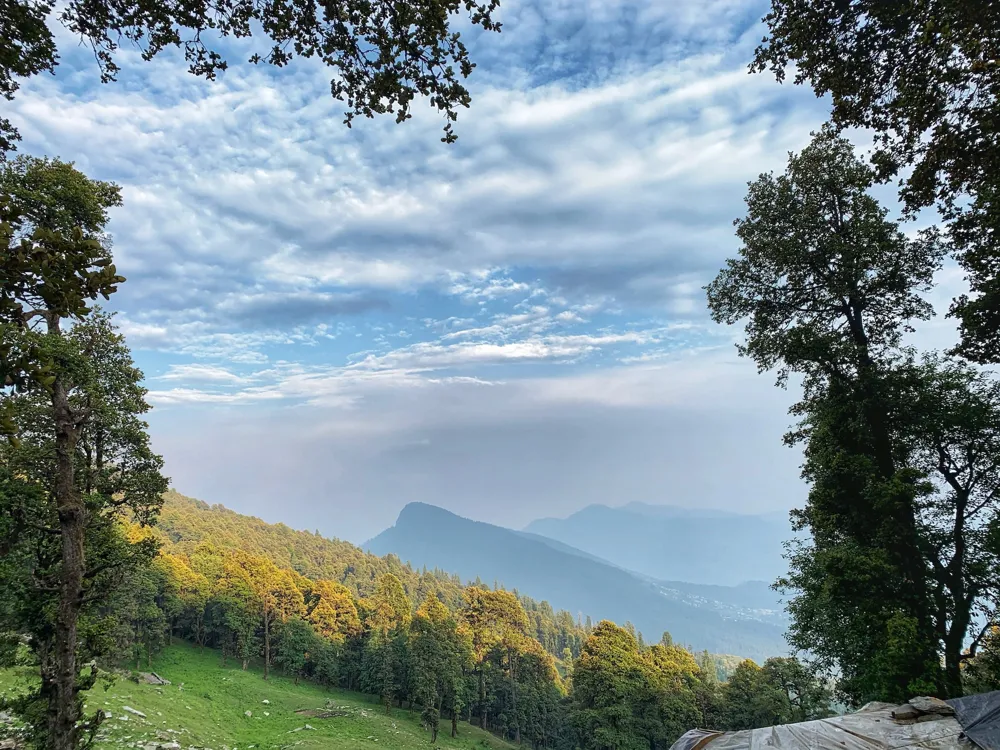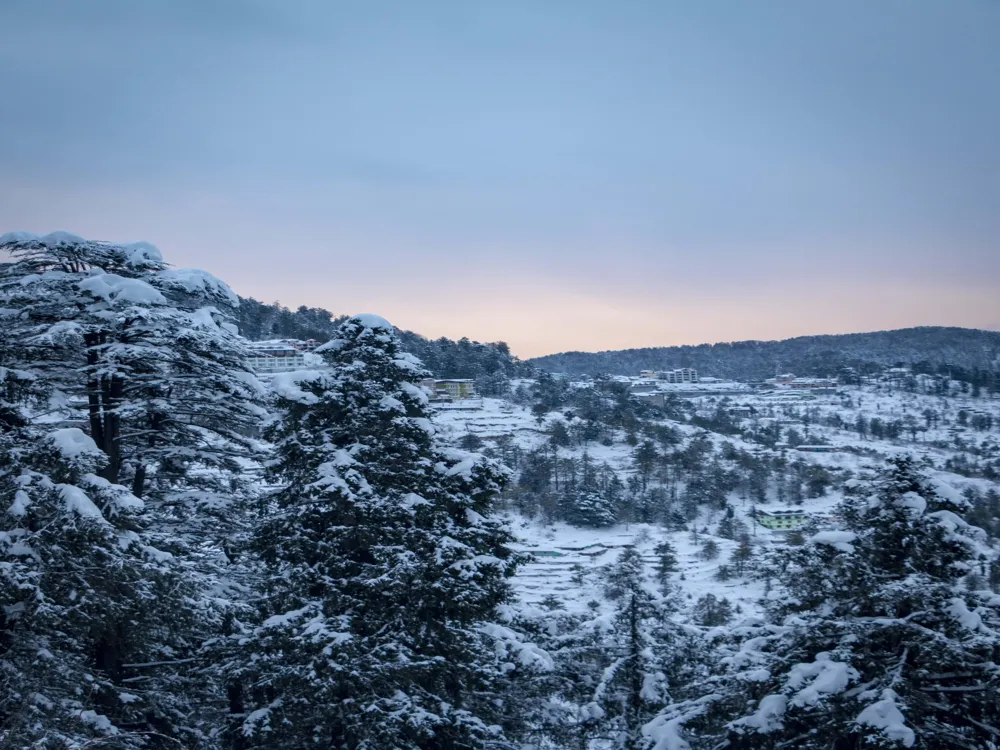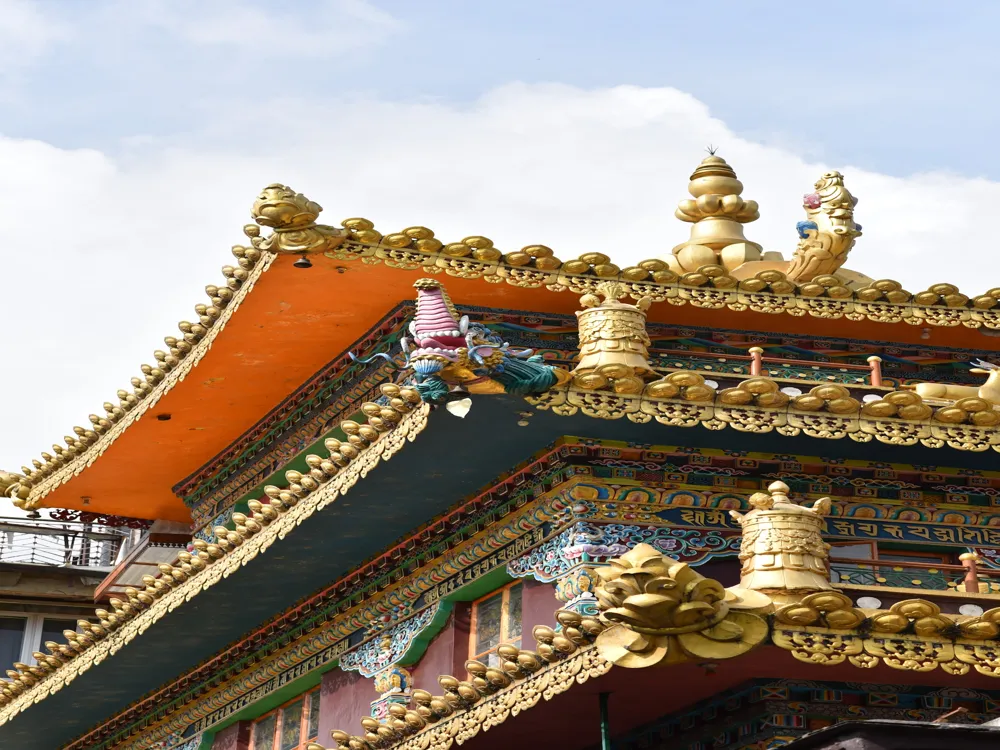Nestled in the serene landscapes of Himachal Pradesh, Harinder Mountain stands as a beacon of natural beauty and tranquility in Manikaran, Sahib. This majestic mountain is not just a visual marvel but also a significant site, blending spiritual essence with natural splendor. The region surrounding Harinder Mountain is renowned for its lush greenery, vibrant culture, and rich history, making it a must-visit destination for travelers seeking a blend of peace and adventure. The mountain's geographical location adds to its mystical charm. It is enveloped by the Parvati Valley, known for its therapeutic hot springs and scenic river. Harinder Mountain, with its towering presence, offers breathtaking views of the valley and the surrounding peaks. The unique climatic conditions here create an environment that is both challenging and rewarding for trekkers and nature lovers. Throughout the year, the mountain exhibits a range of colors and textures, from snow-clad peaks in the winter to lush greenery in the summer, offering a different experience each season. Historically, Harinder Mountain has held great significance. Legends speak of its connection to various deities and historical figures, adding a layer of mystique. The area is dotted with ancient temples and sacred sites, frequented by pilgrims and spiritual seekers. The intertwining of nature's beauty with spiritual elements makes Harinder Mountain a unique destination, offering tranquility and introspection amidst its natural splendor. Furthermore, the region's biodiversity is noteworthy, with a wide range of flora and fauna thriving in its forests and valleys. The ecological significance of Harinder Mountain adds another dimension to its allure, appealing to environmentalists and nature enthusiasts alike. The preservation efforts by local communities and authorities ensure that the mountain's natural beauty and ecological balance are maintained, offering a sustainable and enriching experience to visitors. In conclusion, Harinder Mountain is not just a physical landmark but a symbol of the harmonious coexistence of nature, spirituality, and culture. Its captivating beauty, rich history, and spiritual significance make it an unparalleled destination for those seeking a journey of discovery and enlightenment. The architecture of Harinder Mountain is a remarkable blend of natural formations and human ingenuity, reflecting the deep cultural and spiritual roots of the region. The mountain itself is a majestic natural structure, formed over millennia through geological processes. Its rugged terrain, steep cliffs, and gentle slopes present a stunning canvas of natural architecture. The way the mountain interacts with the changing seasons, weather patterns, and the surrounding ecosystem is a testament to the wonders of nature's design. At the foothills and along the slopes of Harinder Mountain, one can find architectural marvels that are a blend of ancient and modern designs. The local architecture is predominantly influenced by the Pahari style, characterized by wooden structures, intricate carvings, and slate roofing. These structures are not only aesthetically pleasing but also functional, designed to withstand the mountainous terrain and weather conditions. The temples and spiritual sites on Harinder Mountain are prime examples of traditional Himalayan architecture. These sacred structures, some dating back centuries, are built using locally sourced materials and embody the artistic and spiritual heritage of the region. The intricate carvings, murals, and sculptures found in these temples tell stories of the gods and goddesses, local legends, and the history of the area. In addition to the religious structures, the mountain's architecture includes various forts, bridges, and historic pathways that were once part of ancient trade routes. These historical constructions showcase the engineering skills and strategic thinking of the past civilizations. They also serve as a reminder of the mountain's significance as a cultural and commercial hub in the Himalayas. The modern developments in the region have been designed with a focus on sustainability and preserving the natural beauty of the mountain. Eco-friendly materials, green building techniques, and designs that blend with the landscape are increasingly adopted. This approach ensures that the architectural growth in the area enhances rather than detracts from the mountain's natural and cultural heritage. In summary, the architecture of Harinder Mountain is a beautiful amalgamation of nature's grandeur and human creativity. It showcases a deep respect for the environment, a rich cultural history, and a commitment to preserving the region's unique heritage for future generations. The ideal time to visit Harinder Mountain is from April to June, when the weather is pleasant, and the natural beauty is at its peak. However, for those who enjoy winter sports or wish to see the snow-covered landscape, December to February is the best period. Ensure to pack warm clothing, comfortable trekking shoes, a first-aid kit, and essentials like a flashlight, extra batteries, and a power bank. Don’t forget to carry a water bottle and some high-energy snacks. Acclimatize yourself to the altitude and stay hydrated. Be aware of the symptoms of altitude sickness. Always follow the marked trails and respect wildlife and natural habitats. Be mindful of local customs and traditions. Dress modestly, especially when visiting religious sites, and seek permission before taking photographs of locals or sacred places. Adhere to eco-friendly practices. Avoid littering and carry back all non-biodegradable waste. Use water and other resources judiciously. Harinder Mountain in Manikaran, Sahib, is accessible by various modes of transport. The nearest airport is the Kullu-Manali Airport, from where you can hire a taxi or take a bus to Manikaran. If you prefer train travel, the closest railway station is in Joginder Nagar, and from there, buses and taxis are available to reach Manikaran. For those driving, Manikaran is well-connected by road to major cities like Delhi and Chandigarh. Local buses, taxis, and self-driven cars are popular options for reaching the mountain. Read moreOverview of Harinder Mountain in Manikaran, Sahib, and Himachal Pradesh
The architecture of Harinder Mountain
Tips When Visiting Harinder Mountain
Best Time to Visit
Packing Essentials
Health and Safety
Respecting Local Culture
Environmental Responsibility
How To Reach Harinder Mountain
Manikaran Sahib Tourism
Best Time to Visit Manikaran Sahib
How to Reach Manikaran Sahib
Things To Do, Manikaran Sahib
Harinder Mountain
Manikaran Sahib
Himachal Pradesh
₹ 7,299 onwards
View manikaran-sahib Packages
Manikaran-sahib Travel Packages
View All Packages For Manikaran-sahib
Top Hotel Collections for Manikaran-sahib

Private Pool

Luxury Hotels

5-Star Hotels

Pet Friendly
Top Hotels Near Manikaran-sahib
Other Top Ranking Places In Manikaran-sahib
View All Places To Visit In manikaran-sahib
View manikaran-sahib Packages
Manikaran-sahib Travel Packages
View All Packages For Manikaran-sahib
Top Hotel Collections for Manikaran-sahib

Private Pool

Luxury Hotels

5-Star Hotels

Pet Friendly














